The Lucky Charm continues westward to Kentucky, with two ominous-sounding hiking obstacles in two different locations. This state clearly favors skinny people, with two separate narrow hiking passes: Fat Man’s Squeeze and Fat Man’s Pass. Our first destination was Natural Bridge State Resort Park in the Red River Gorge area.

The Natural Bridge in the park name refers to a 900 ton natural sandstone arch, 65′ high and 78′ wide, which is reached via 4 different hiking trails (of varying length and elevation gain), or via a (cheater, cheater, pumpkin eater) chairlift.
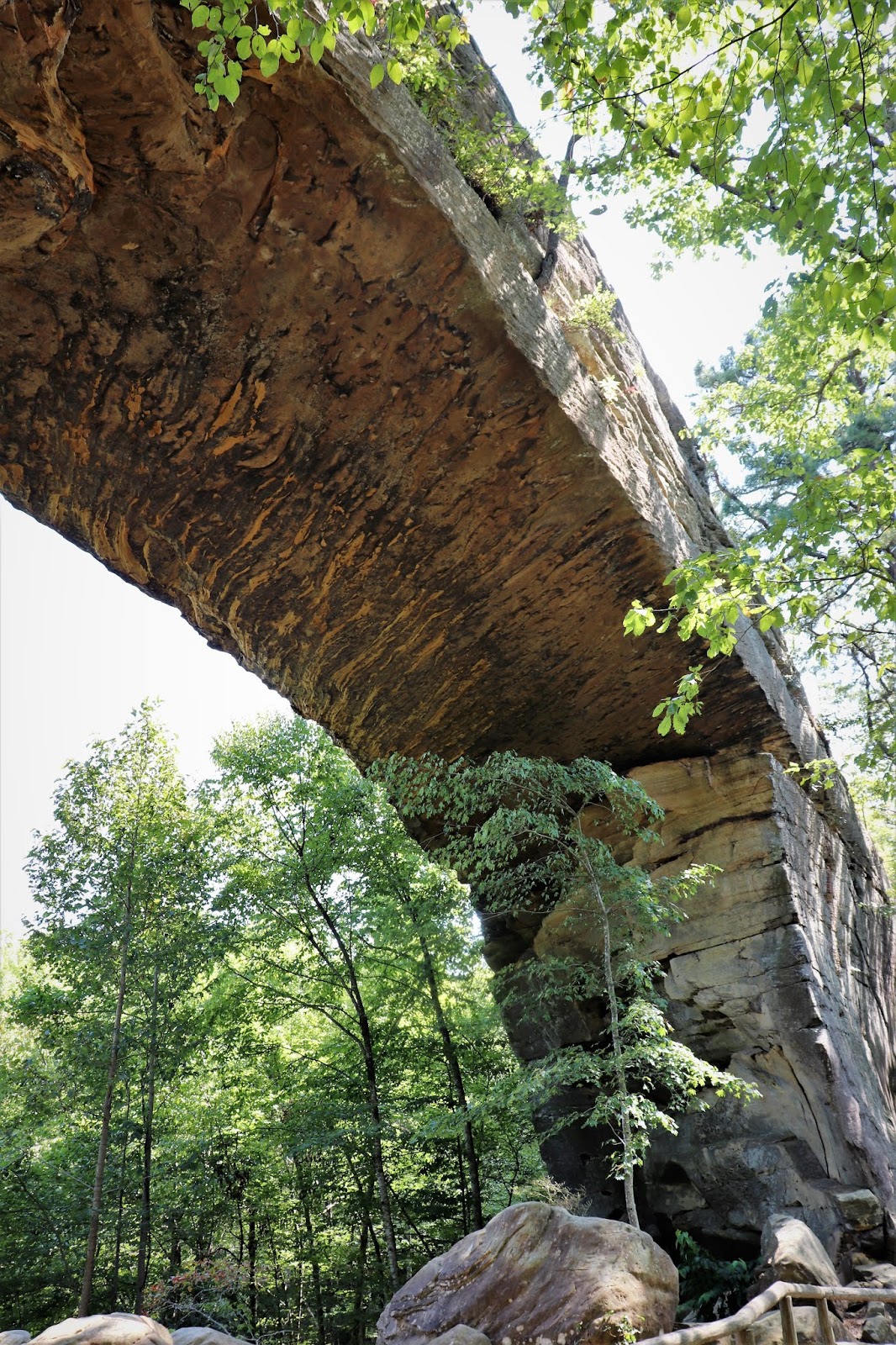
The hike to the Natural Arch took us over, around, under and through lots of fun rock formations.


The end of the hiking trail deposited us underneath the arch. To get to the top, a series of steps led through … DUN DUN DUNNN! … Fat Man’s Squeeze.
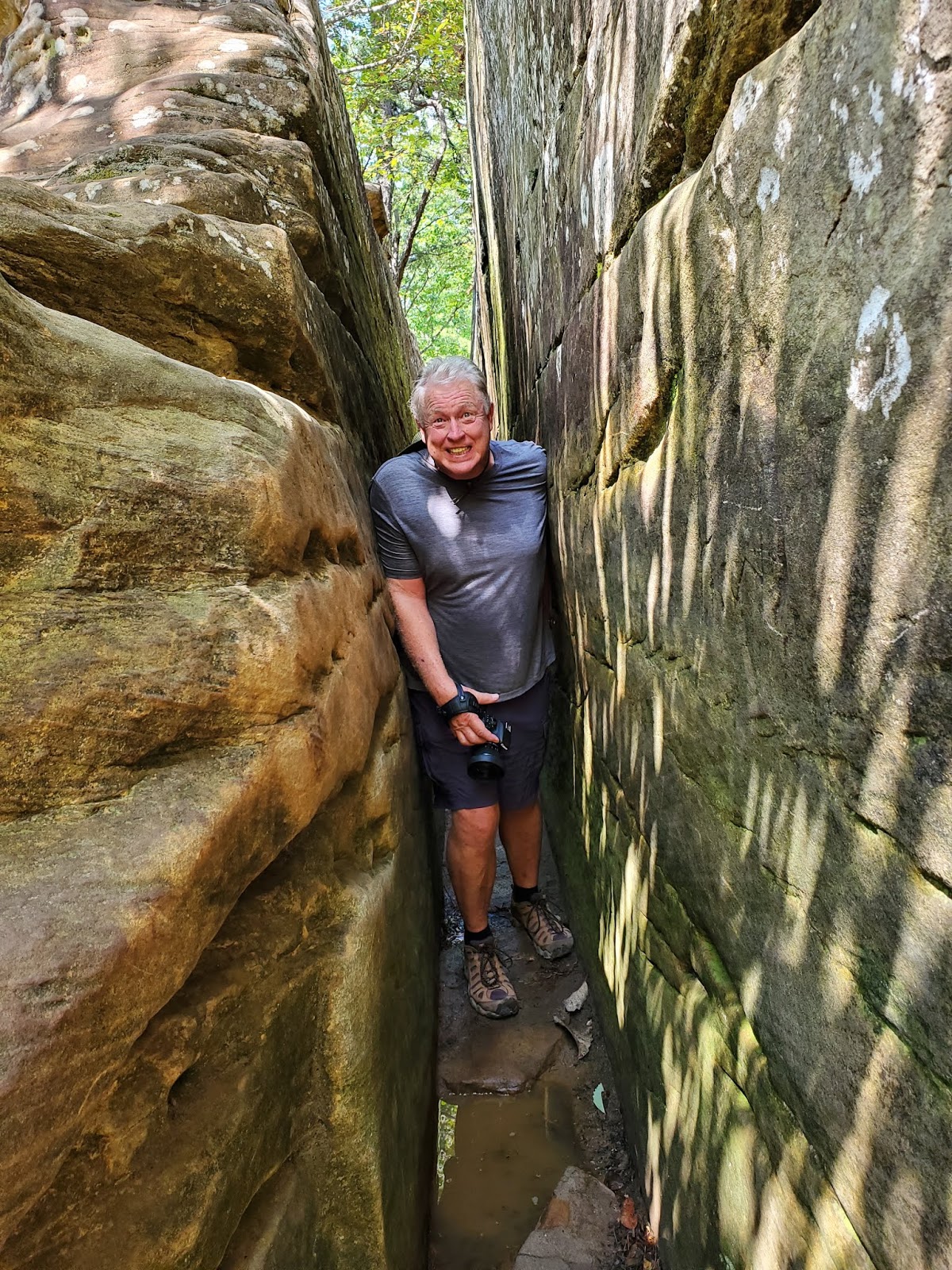
Philip is not fat … in fact, he’s lost at least 25 pounds this summer! But he was definitely getting squeezed. Up on top of the rock arch, abundant views into the Daniel Boone National Forest.
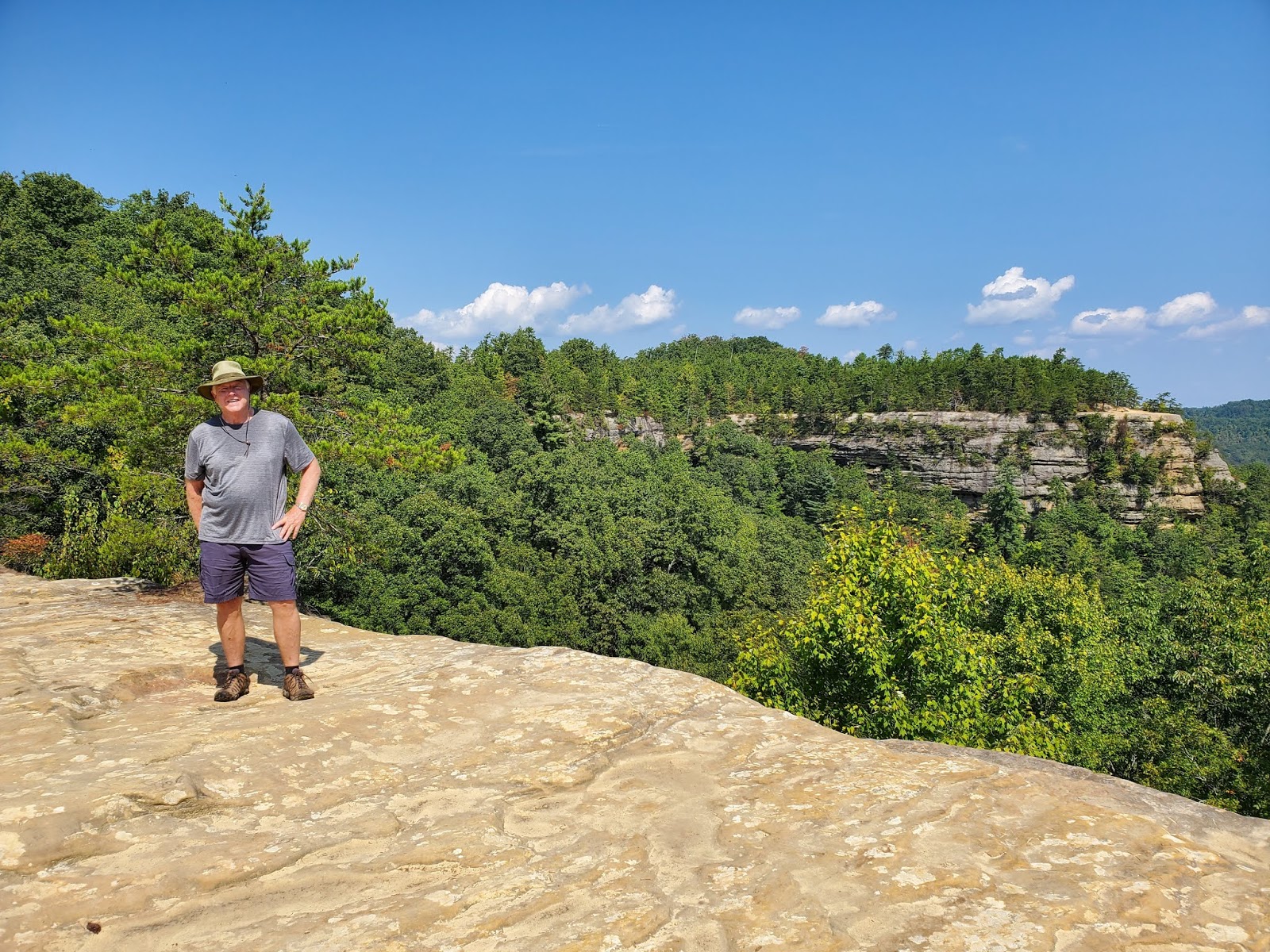
Natural Bridge is not the only arch in the area; in fact, there are more than 100 sandstone arches of varying size throughout the nearby Red River Gorge Geological Area, almost all requiring a hike to reach. Here, Gray’s Arch: 50′ tall, 79′ wide.
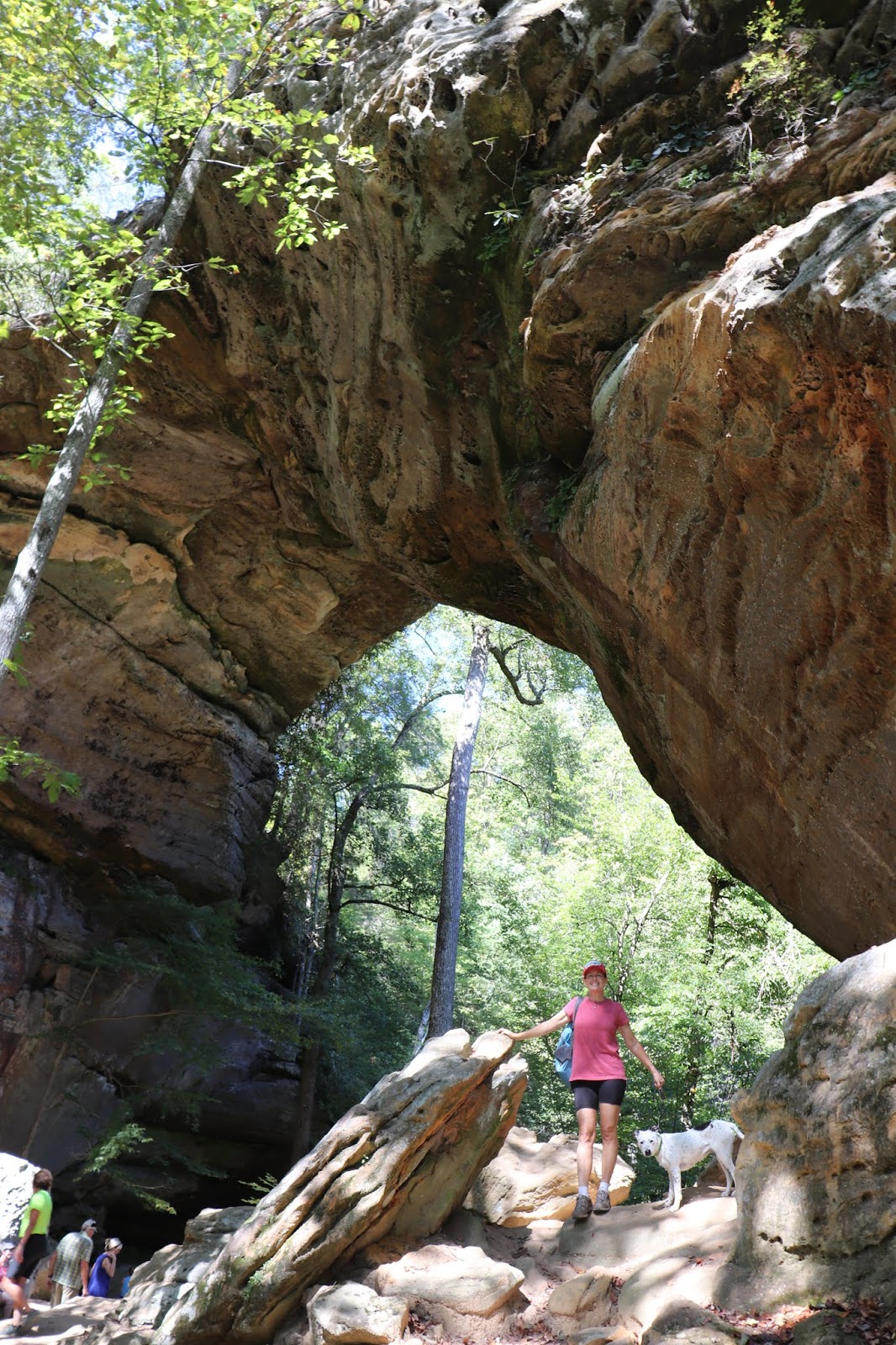
The hike to Whittleton Arch felt like a scene from Jurassic Park, all towering cliffs and bright, verdant vegetation.
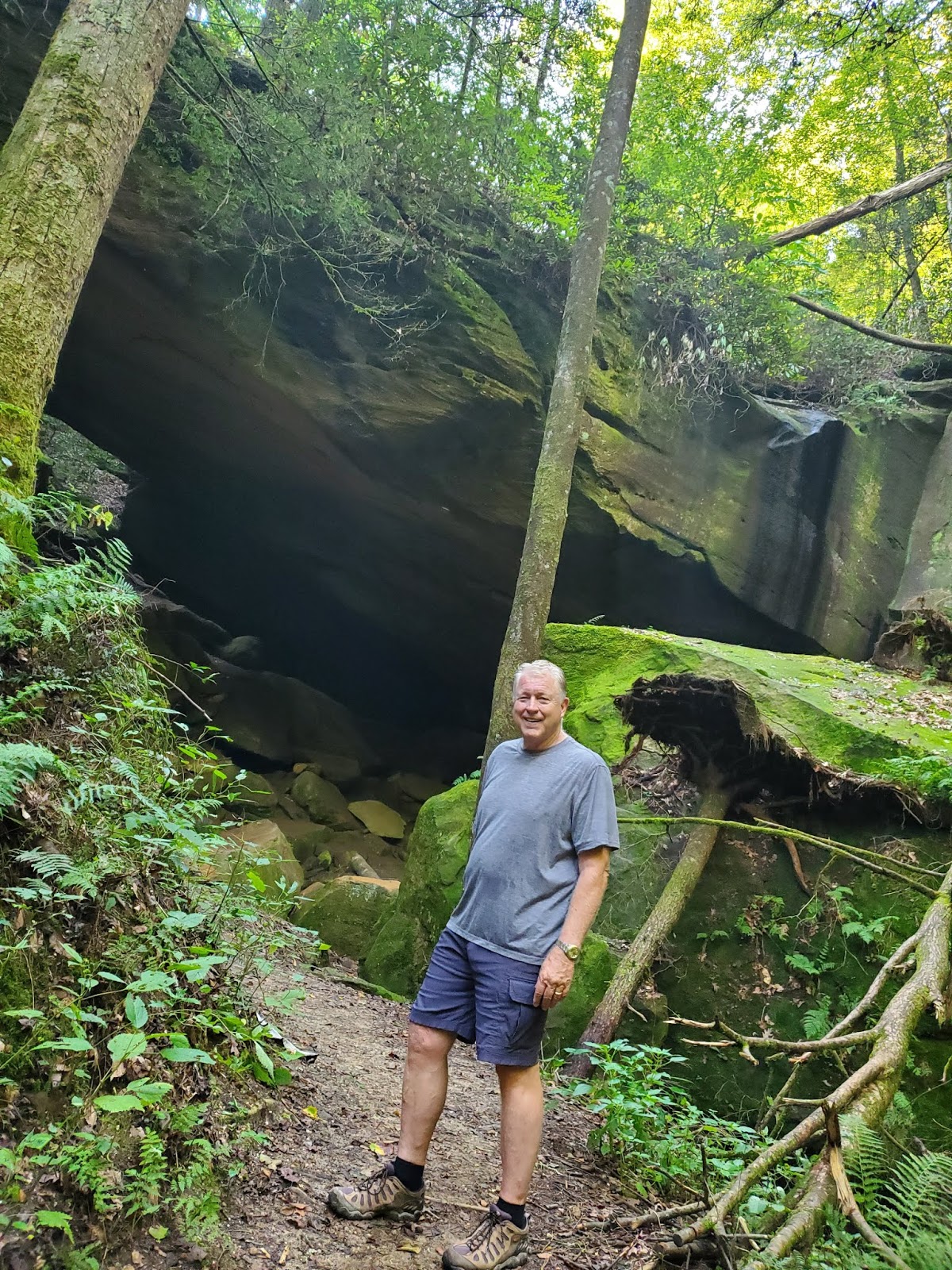
Even the plant leaves were Jurassic-sized!

Mill Creek Lake is popular for kayaking, and the sun’s rays arching through the clouds to reach the water were spectacular.
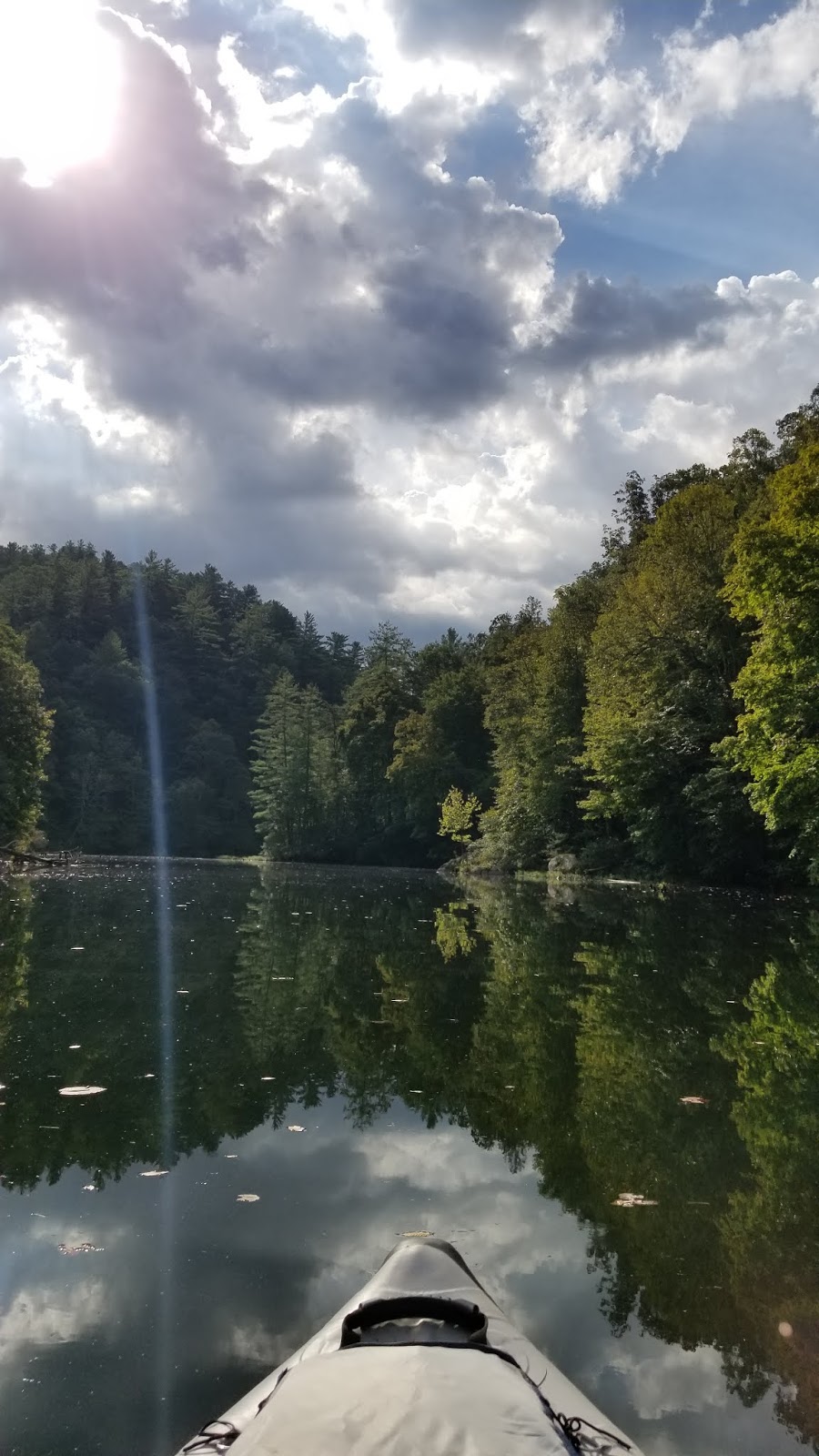
The Red River Scenic Byway (Route 77) is a gorgeous drive, but the road is barely a car’s width, and people drive VERY fast around here. Our nerves were most tested at the Nada Tunnel, a 900-foot, one-lane, 13′ tall, 12′ wide, former logging railway transport route from the early 1900’s.


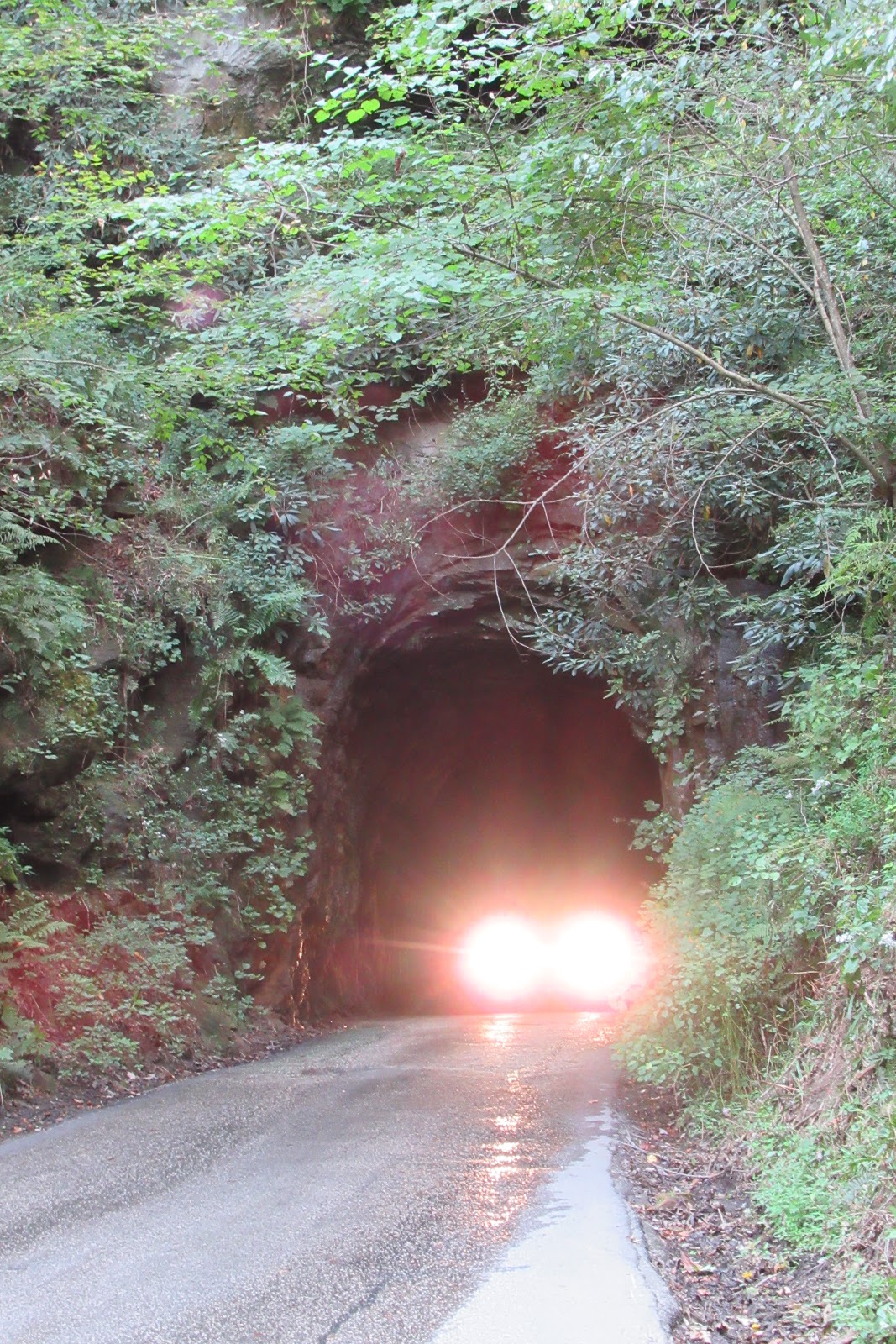

Along the scenic route, the Gladie Cabin is a restored log cabin from the late 1800’s, when it was used as a post office during the logging era.
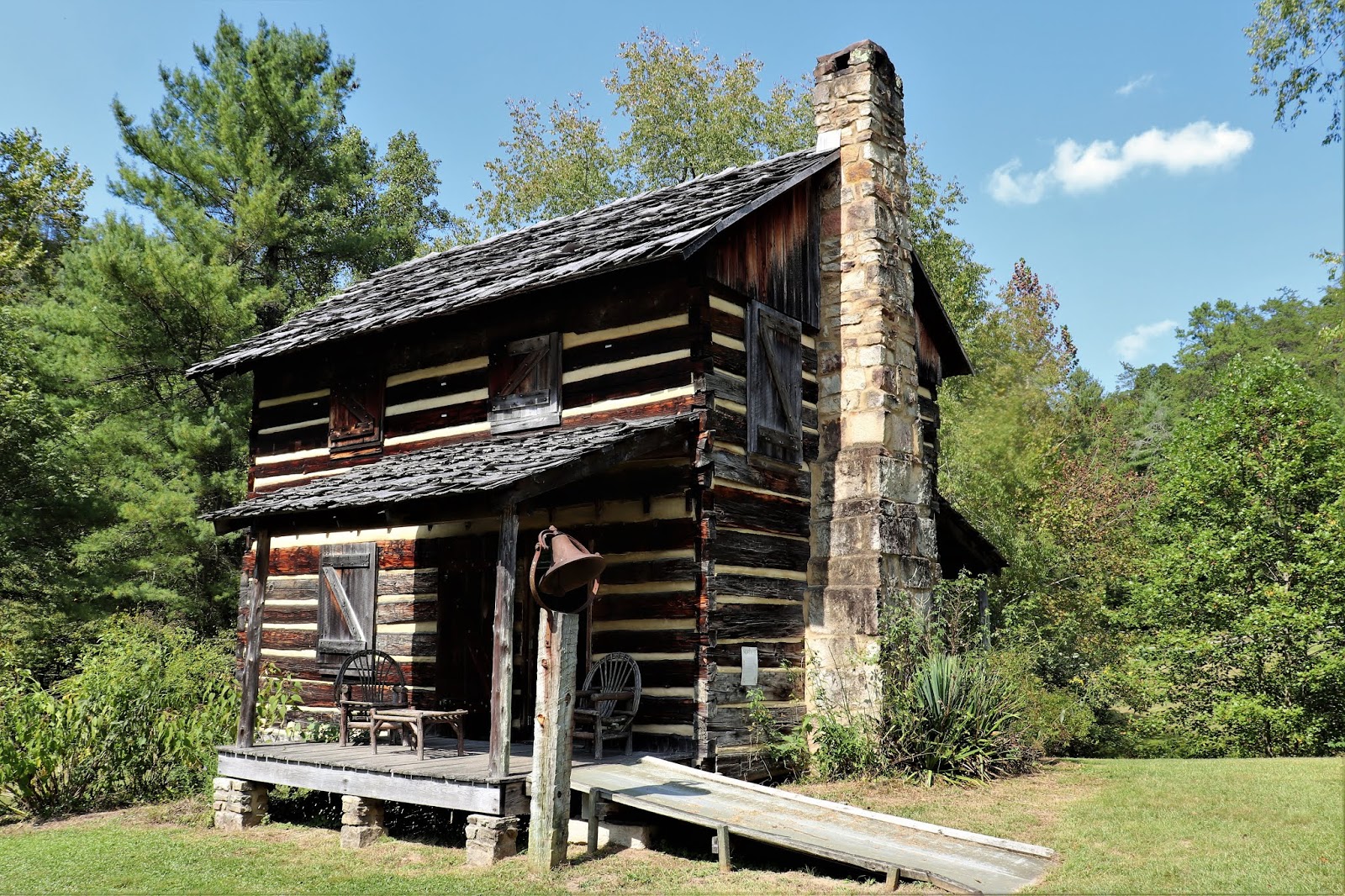
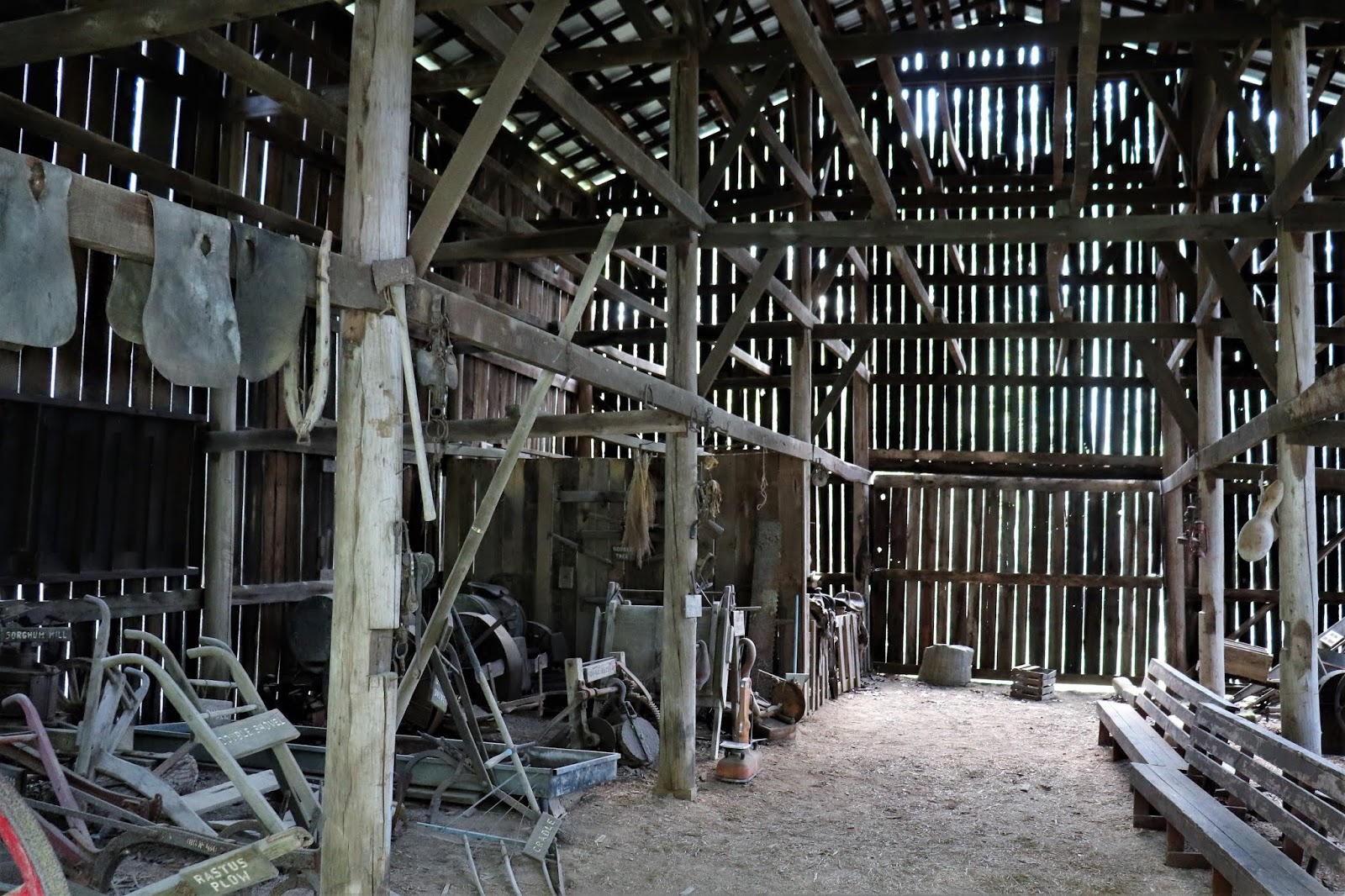
The “place to be” in this area is hip Miguel’s Pizza. Red River Gorge is well known for its rock climbing possibilities, and climbers come from around the world for the amazing climbs in the area. Miguel’s, besides made-to-order pizza slices with at least 40 topping choices, also allows visitors to pitch their tent here for $3 and take advantage of their showers, gear storage, and excellent eats, including locally made ginger ale.
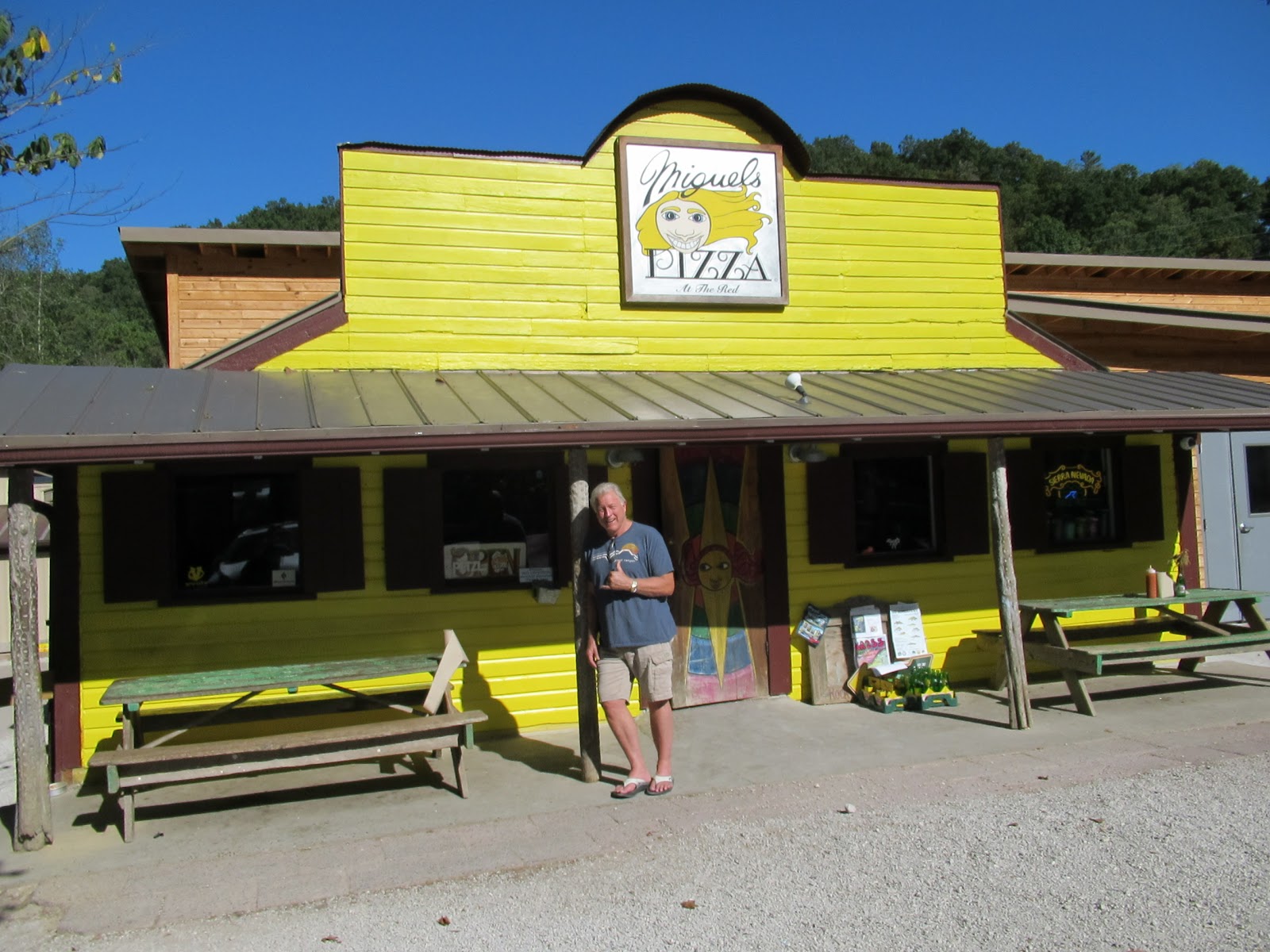
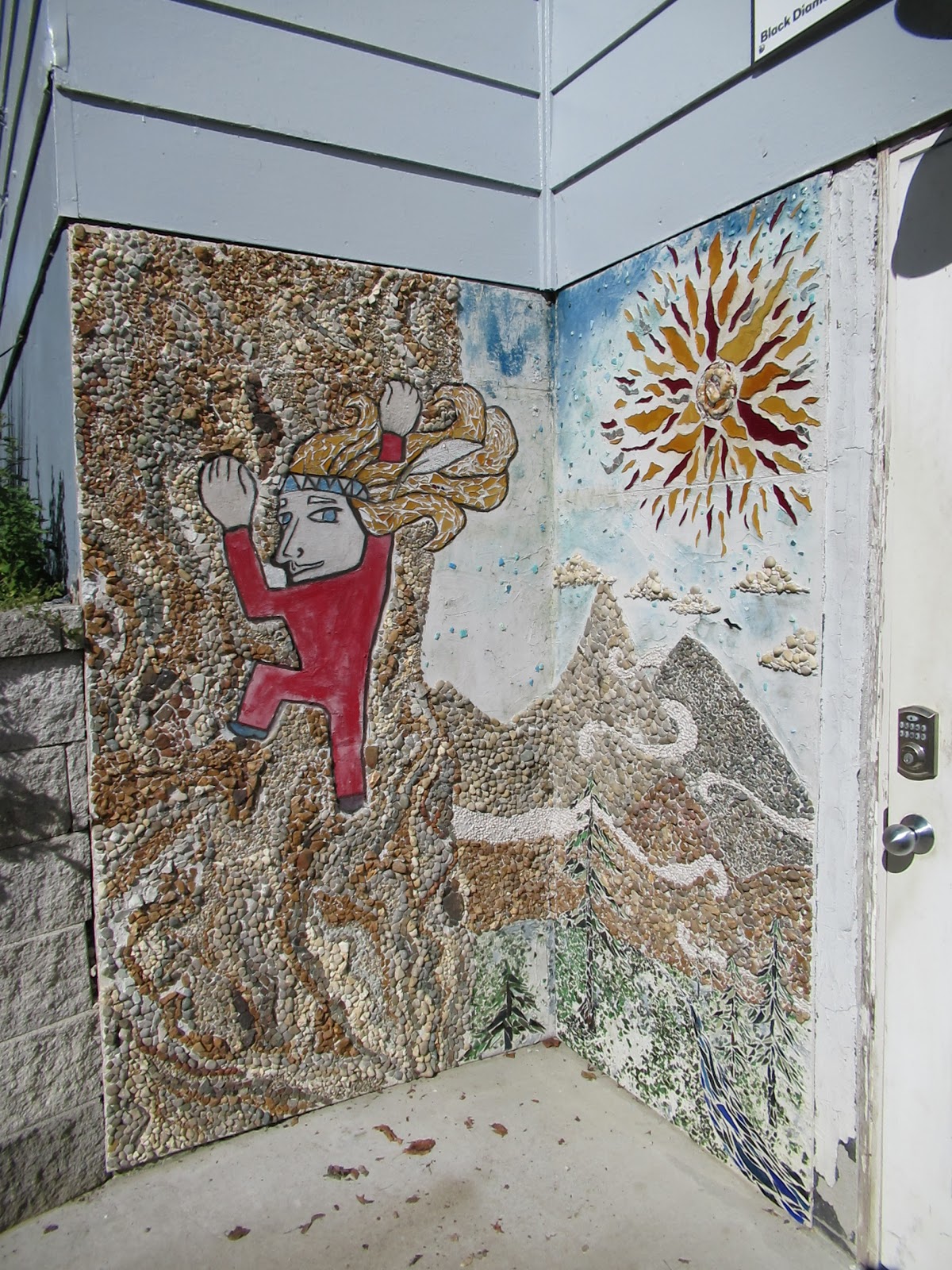
It’s also the best/only place where we got enough cell service to watch the Cardinals’ second game of the season. There are worse places to watch your team lose!

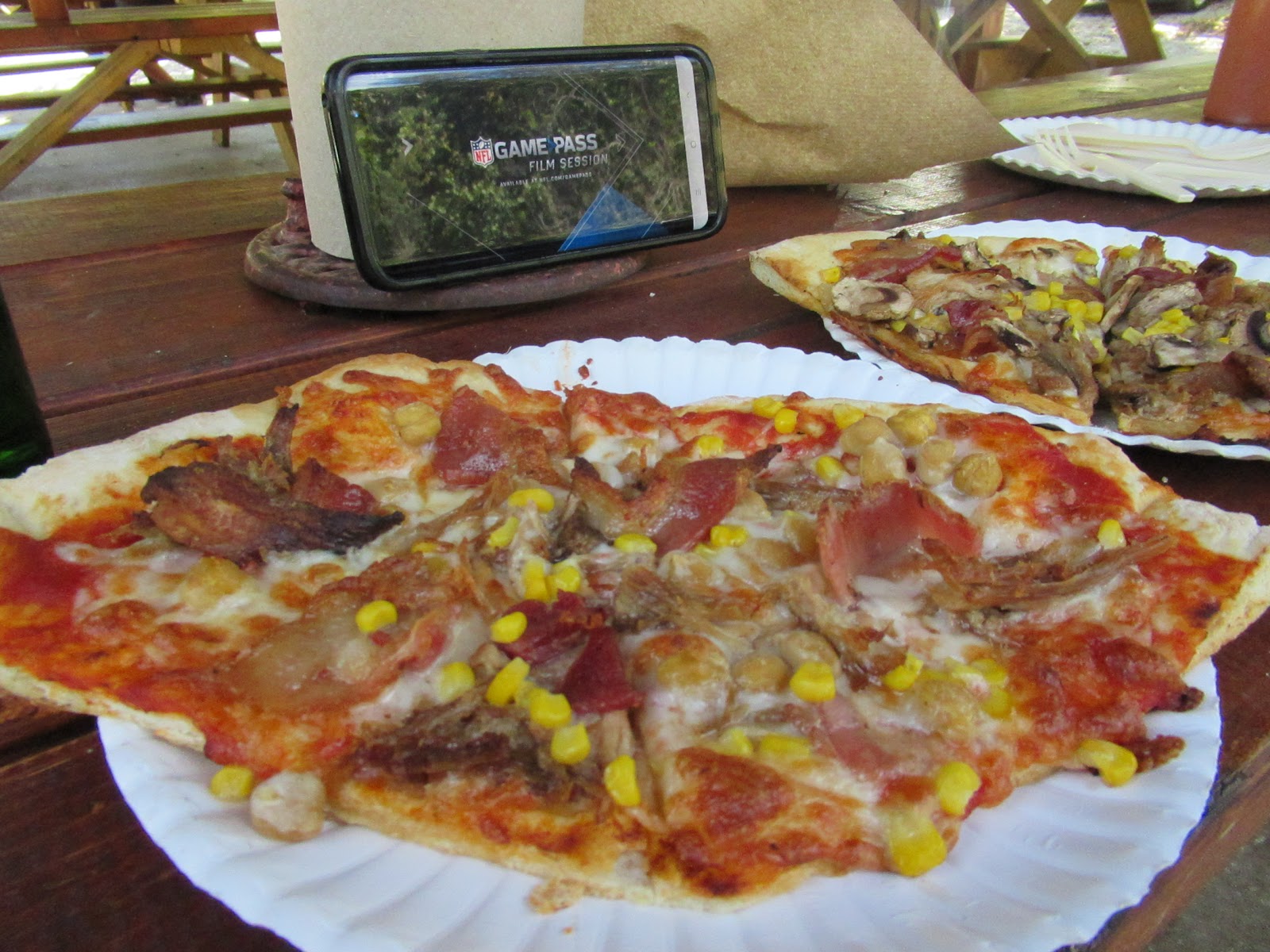
Of peculiar interest at Natural Bridge State Park are the Saturday night hoedowns on “Hoe Down Island.” Those who show up (not us) are instructed in (supposedly) easy to learn Appalachian square
dancing, line dancing, two-stepping, polka’s, waltzes and other couple and
individual dances.
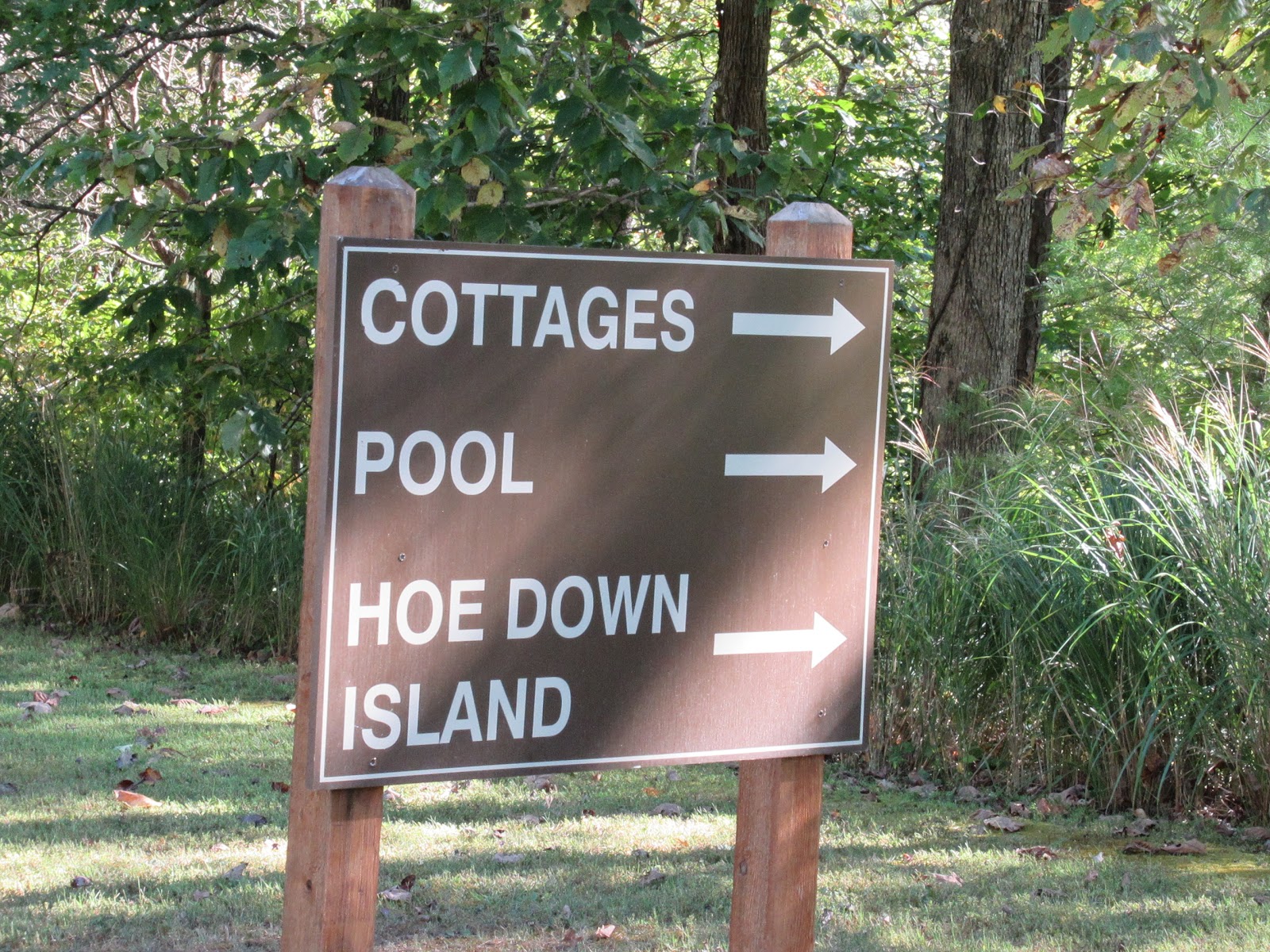
Here is Hoedown Island. Funnily enough, Philip said “I can’t go, I have a thing that night,” and when pressed further, a stomach bug was brought up, plus he needed to wash his hair that night. Hmmmm.

We continued to “Kentucky’s Cave Country,” to the state’s only National Park. Mammoth Cave National Park has the most extensive cave system on Earth, with almost 400 miles of surveyed passageways (twice as long as any known cave!).
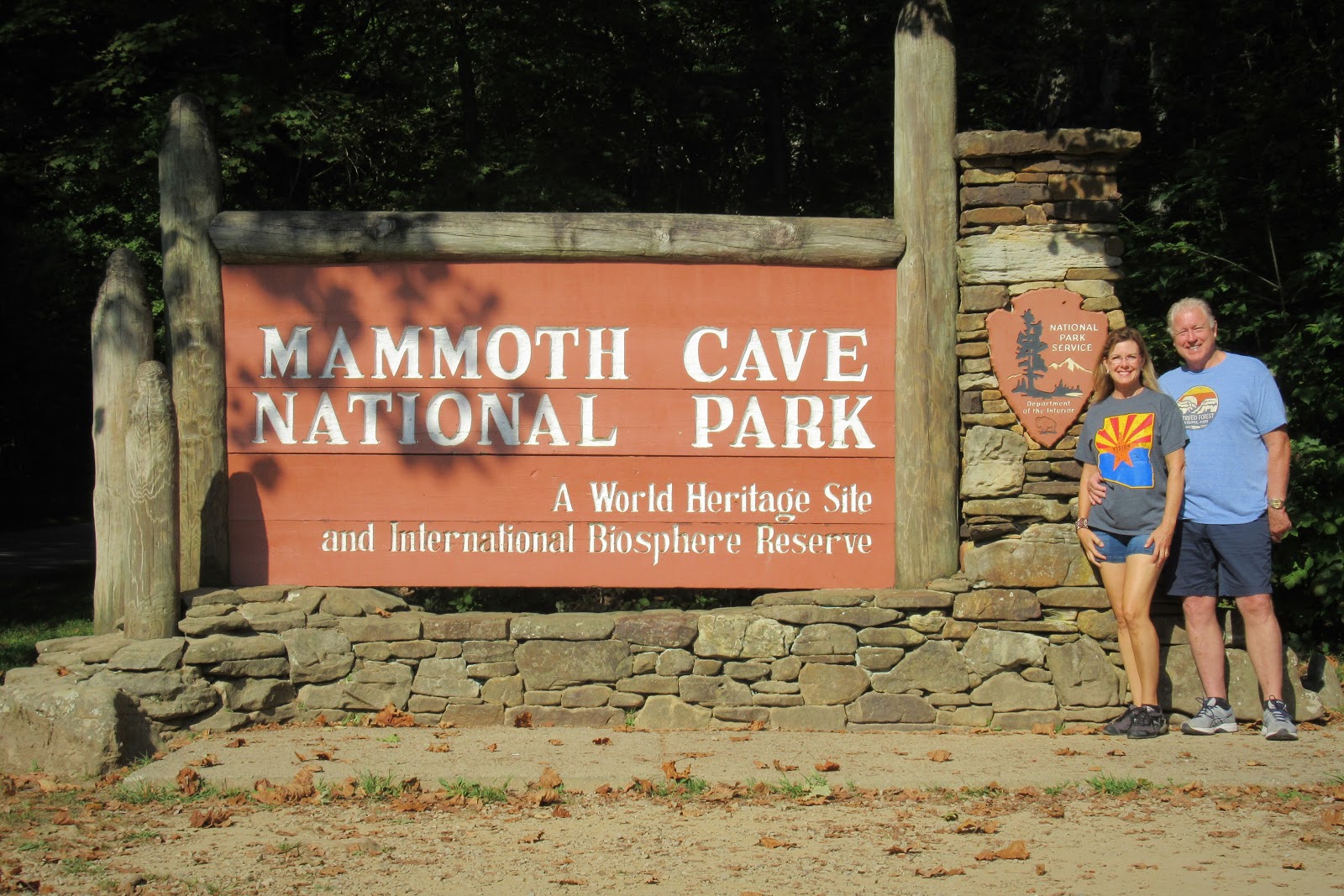
This rare, both-of-us-in-it photo, has been brought to you today by this clever selfie post, perfectly positioned for your camera. Why aren’t these everywhere?
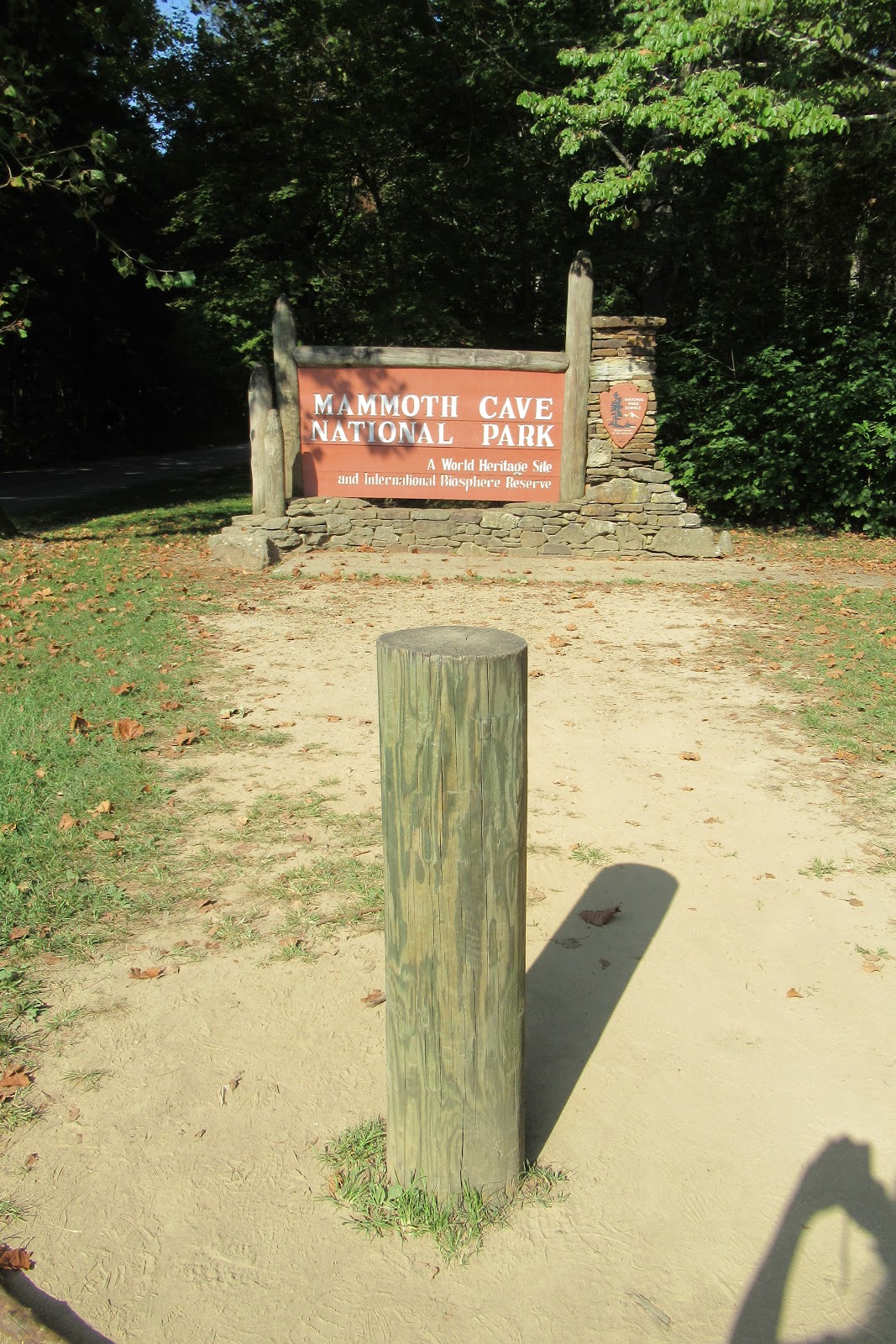
MCNP has been a tourist attraction since 1816, when visitors could sign up for one of two tours: “short” or “long.” Short would be about 8 hours and long would be upwards of 14 hours. Gentlemen wore their finest suits and cravats. Ladies wore full hoop skirts, high-heeled boots, and whalebone corsets, for the privilege of crawling through mud and over rocks in near-total darkness!
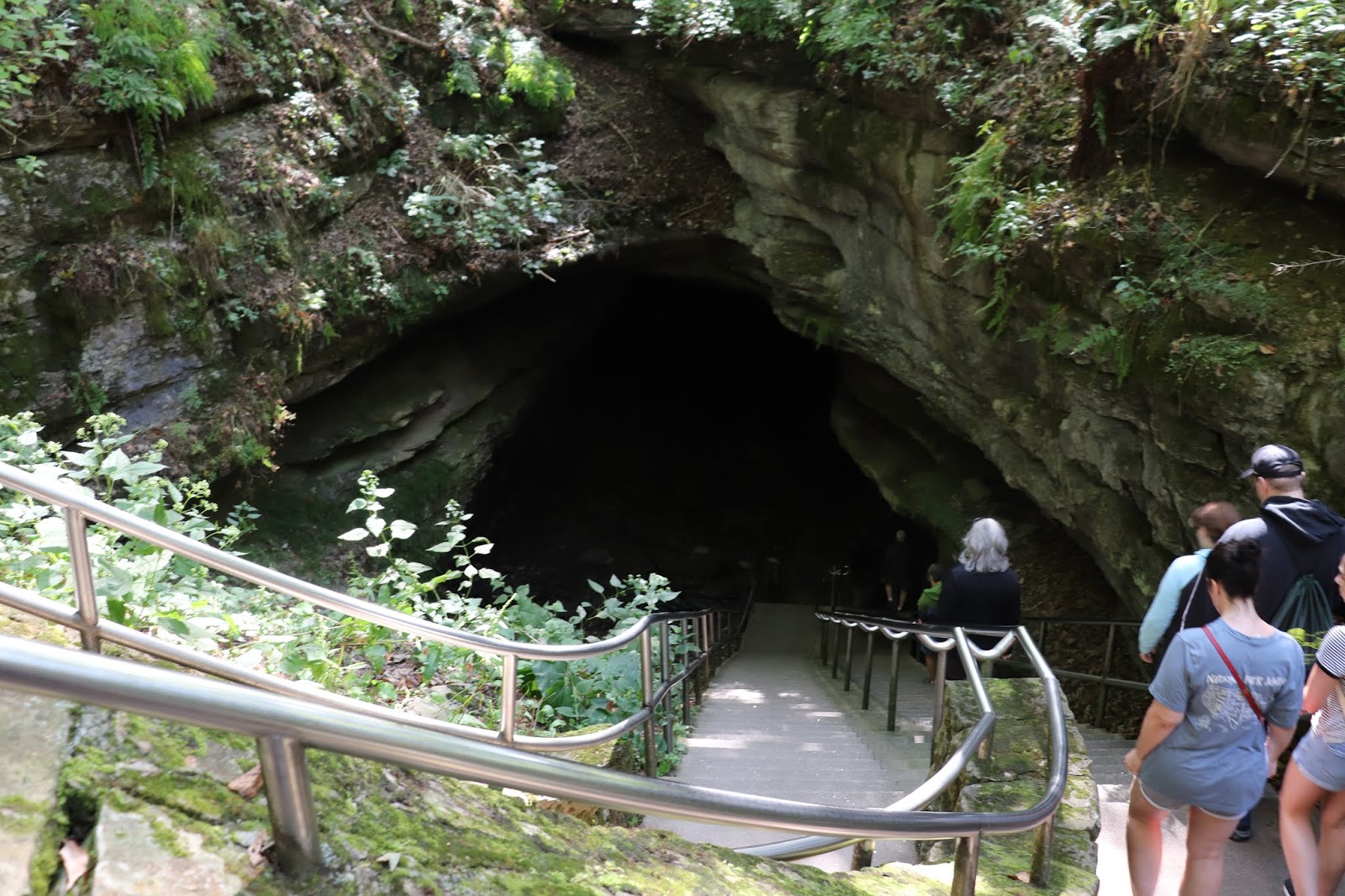
In 1838, Franklin Gorin purchased the cave for $5,000, and brought his enslaved African Americans along with him, including Stephen Bishop, a self-educated slave who became a legendary cave guide and explorer in MCNP. He started at age 17 and was the first to visit many miles of the cave. He is buried here, although it was a visitor who donated the headstone more than 20 years after his death, and it was clearly a hand-me-down, as it was originally designated for a Union soldier; thus the decorative military carving.

Today, there are over 40 different tours offered at MCNP, and you must choose one of them to visit the cave, as there are no self-guided options.
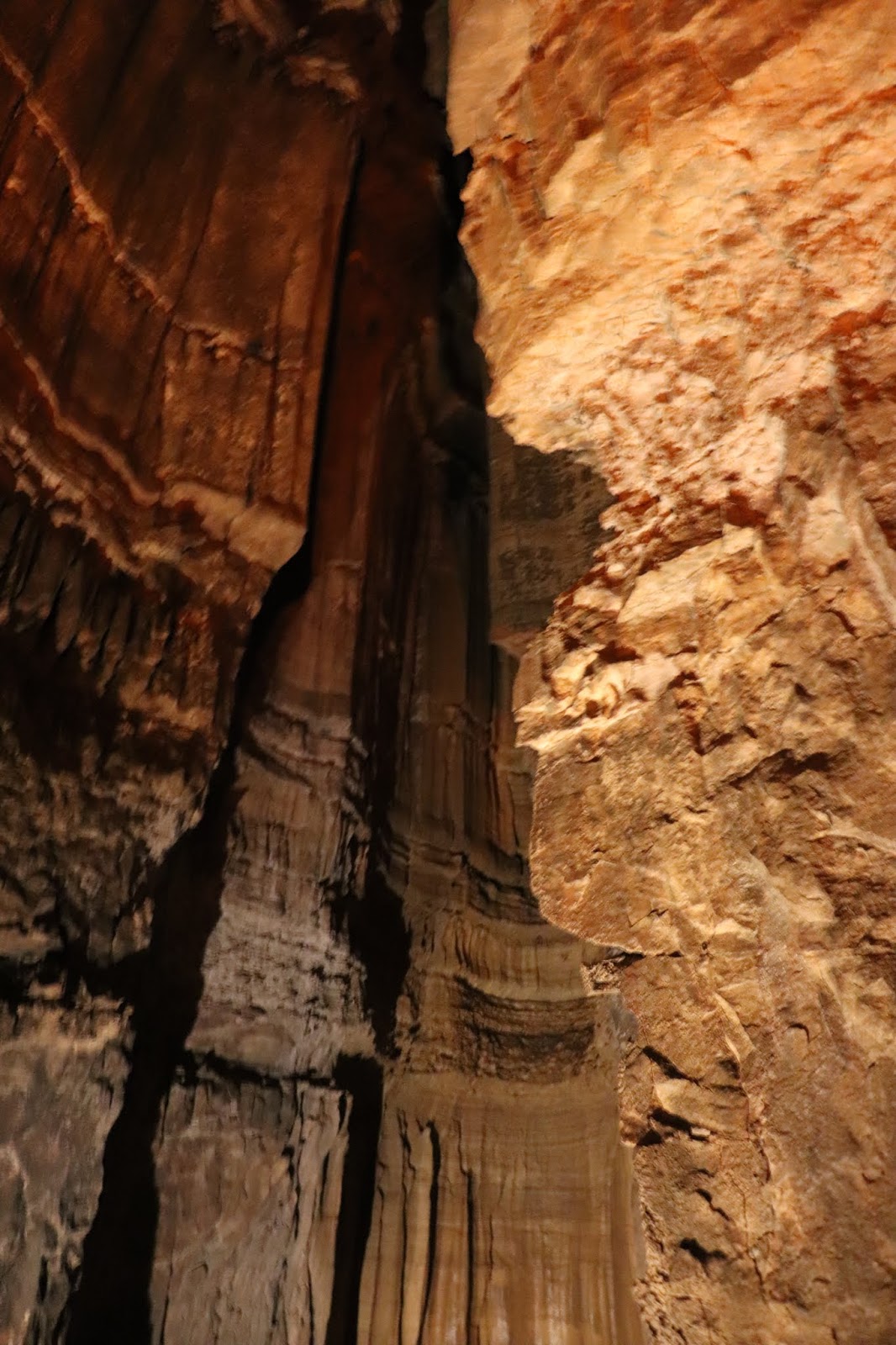
It’s so naturally dark in the depths of the cave, that the naturally-occuring fish have no eyes … just sockets where eyes should be, for there has been nothing for them to be able to see for millions of millenia! Eyes = Obsolete. Luckily, modern electricity lights the way for us today.

Early uses of the cave included the mining (by slaves) of saltpeter, an important ingredient in gunpowder, especially during the War of 1812. The wooden boxes and handmade pipes used in the slurry process are left abandoned in the cave, just as they were on the day the war ended.
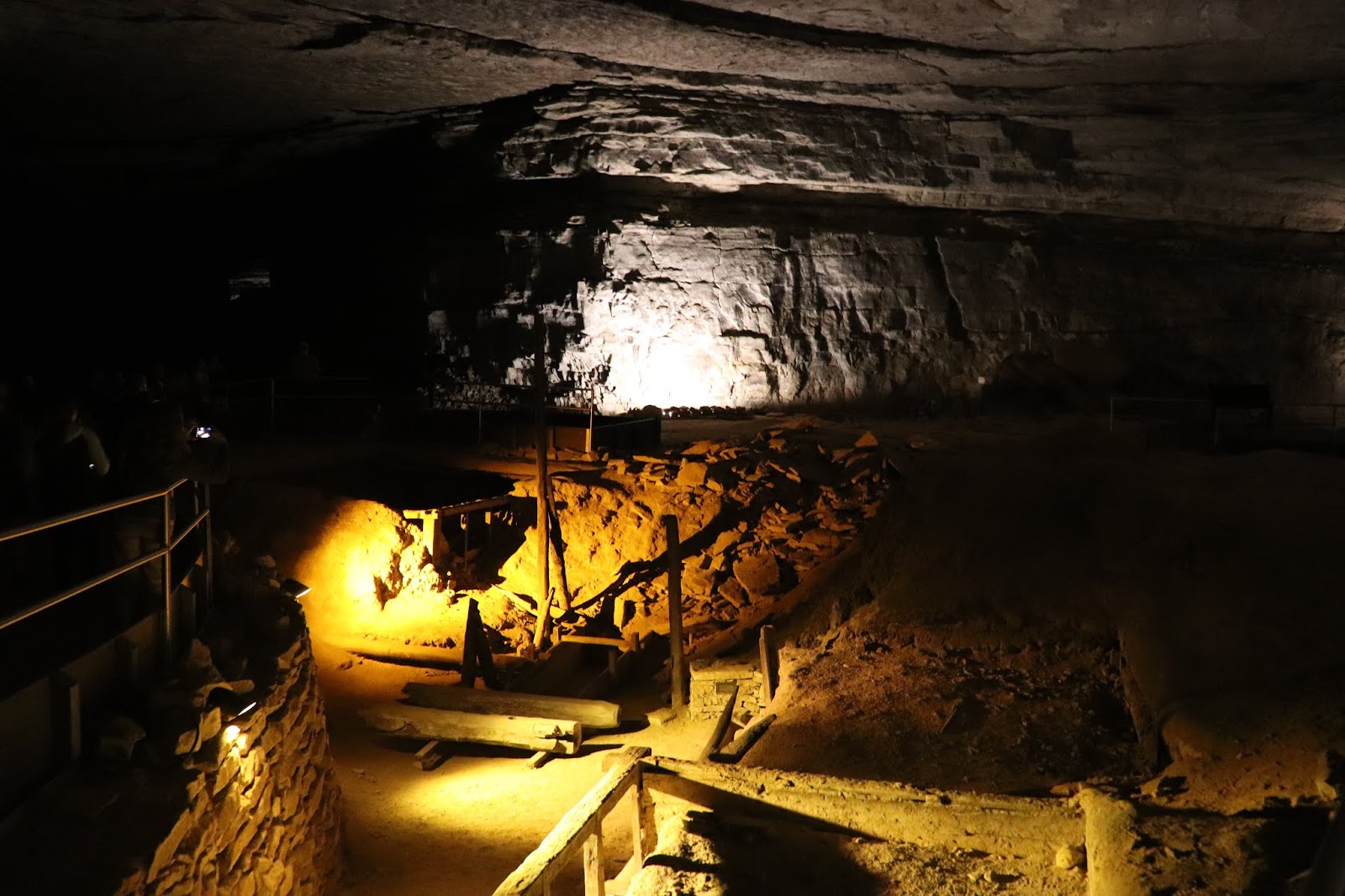
For a few years, Dr. Gorin had comsumption (tuberculosis) patients living in the cave, 24/7, in the belief that the moist/cool air would be good for the disease. (Big fail. Turns out dry/warm air was needed.) They lived in these little rooms, drifting out into the darkness in their white gowns like ghosts, scaring the crapola out of the tour guests coming through in those days.
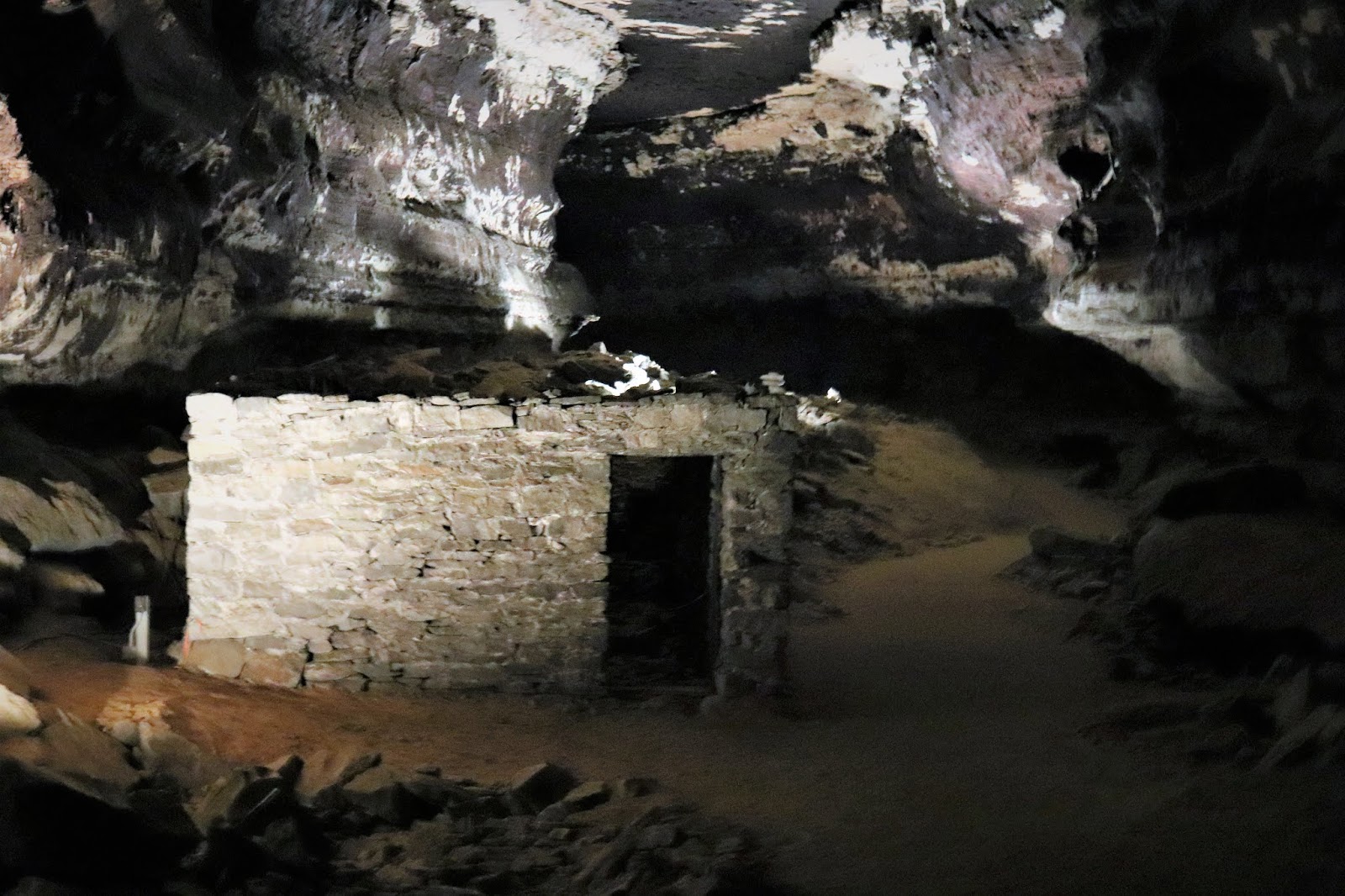
The darkness was punctuated by the light of single candles, sold to tourists by the slaves. People would use the candle smoke to “leave their mark” on the cave walls and ceilings. Today, that would be called “a felony” and you’d be meeting up with a totally different park ranger than your tour guide.
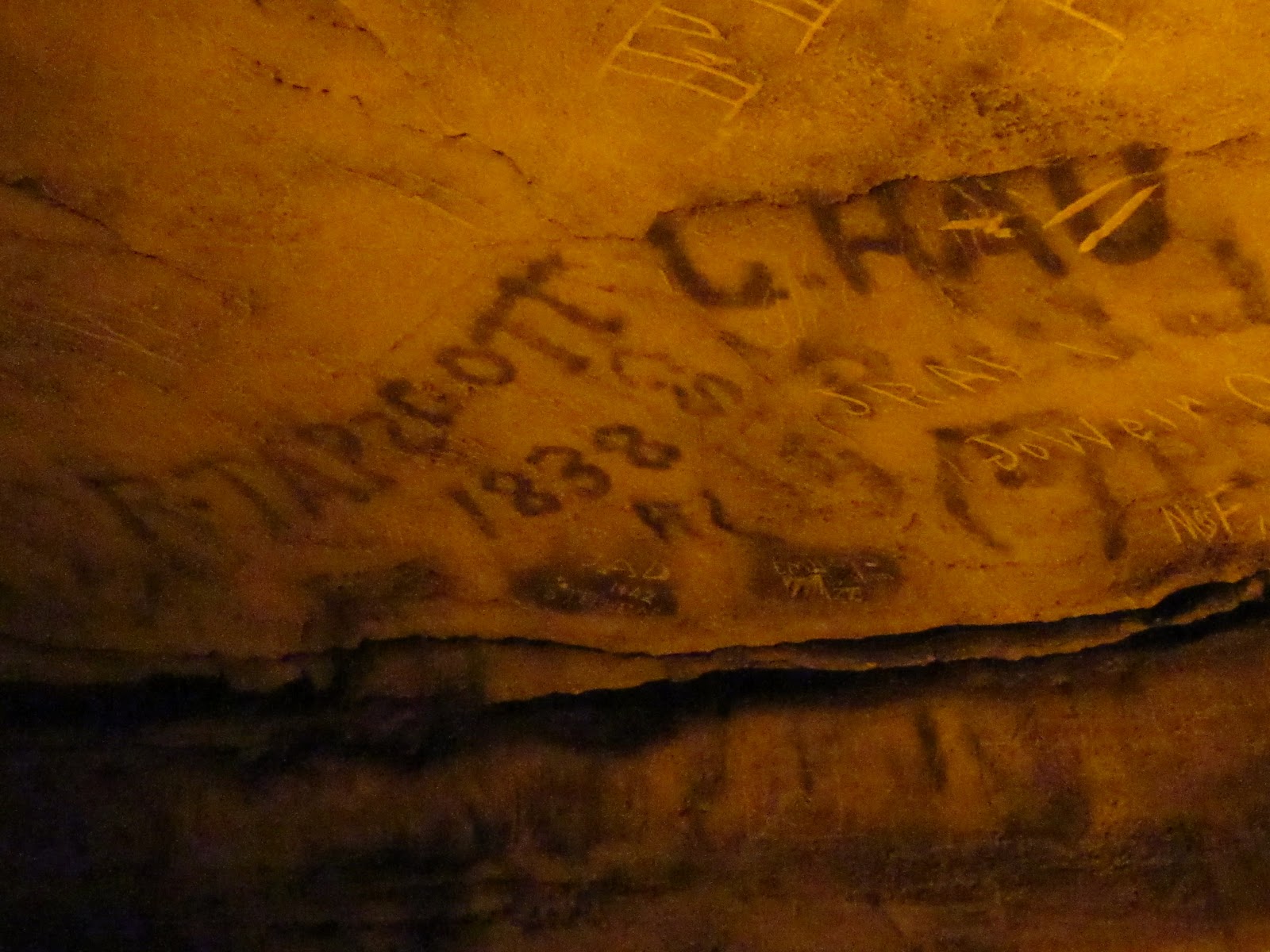
Our second Kentucky weight-discrimination lawsuit was pondered as we traversed the long Fat Man’s Misery, the name of this particular tight fit.

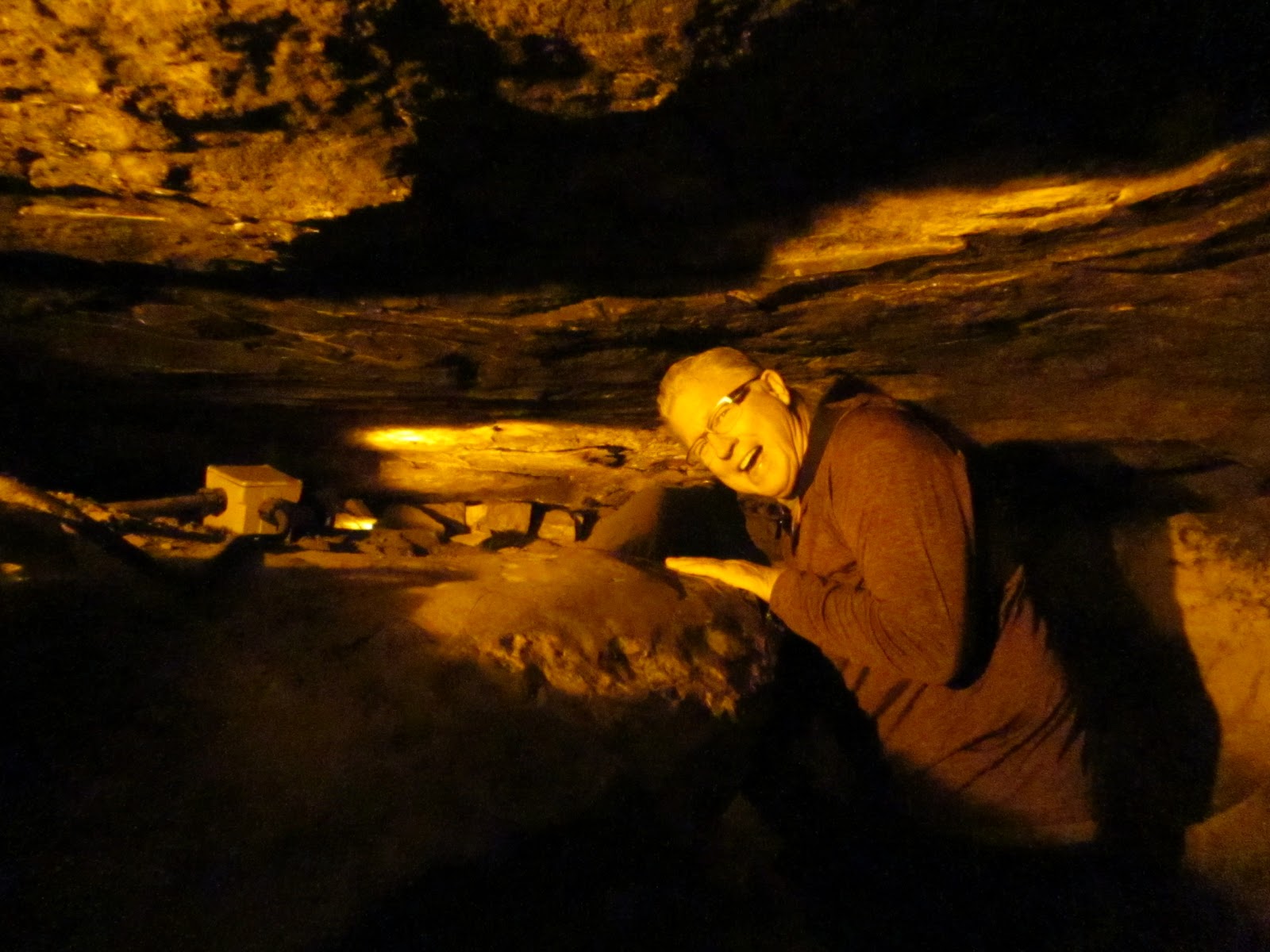

Lastly, in Mayfield, Kentucky, we stopped by the Wooldridge Monuments, a collection of 18 life-sized statues of family members and animals, crammed into Henry Woodridge’s 17′ x 30′ cemetery plot.

The animals including his horse
named Fop (with Henry himself astride) and two dogs named Tow Head and Bob, plus a wild fox.


Relatives included his mother, brothers, sisters, and nieces.

Henry was quite the eccentric and made sure that all the statues were made and installed before he died, and his are the only remains actually interred here.


It seems he gave the sculptors no instructions or photographic references for the statues, meaning their faces are almost all identical.

The complete (and completely fascinating) story can be found here.
The wildlife in Kentucky has been out of this world … particularly the caterpillars! If you’re here in early September, you can even participate in the “Great Caterpillar Count,” where volunteers attempt to estimate the number of these guys running around terrorizing unsuspecting Arizona visitors. Who says they don’t know how to have fun in Kentucky …?!
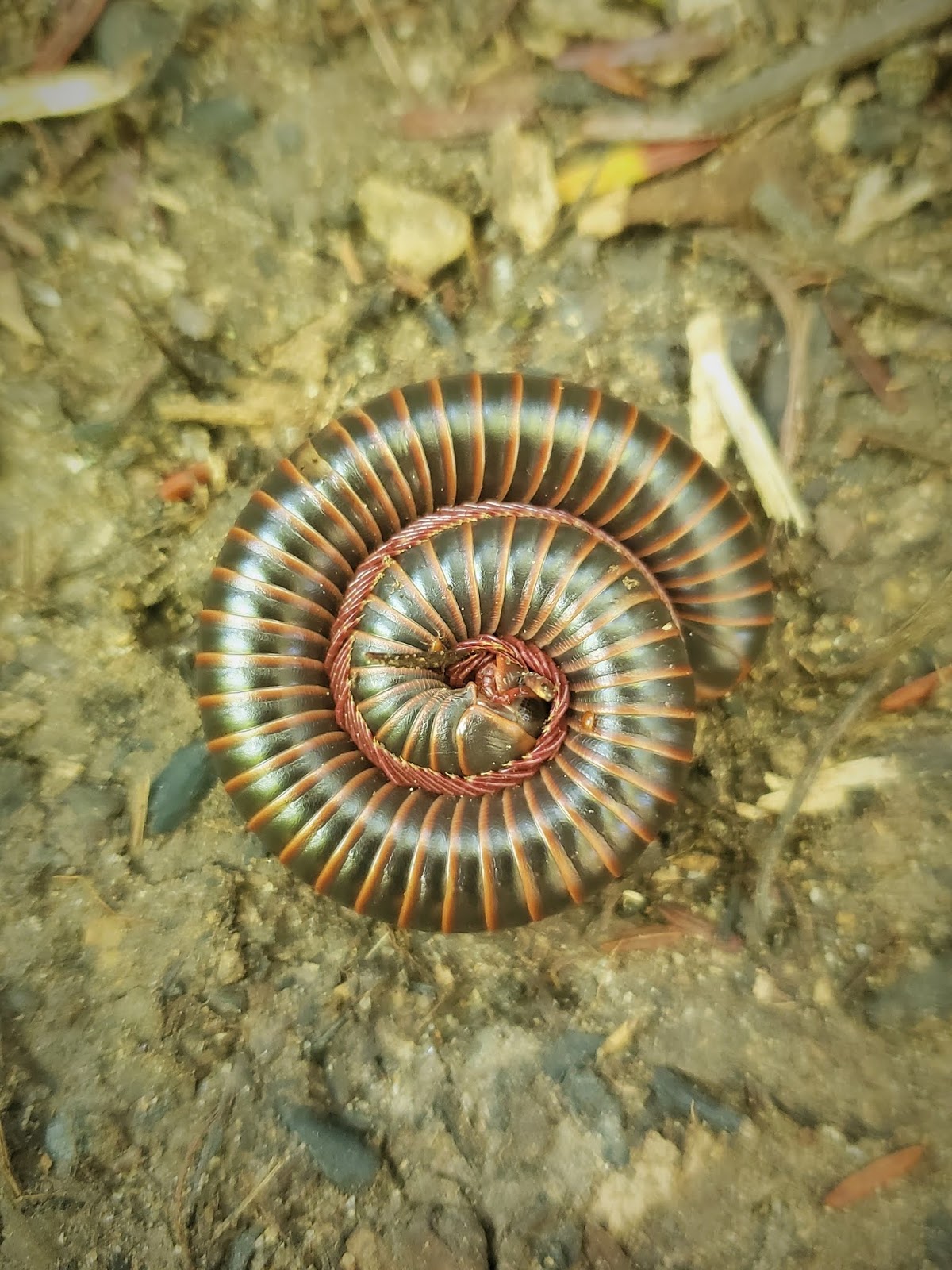
I almost lost my ever-lovin’ mind when we stumbled across the hot-dog-sized (but completely harmless) Hickory Horned Devil Caterpillar.
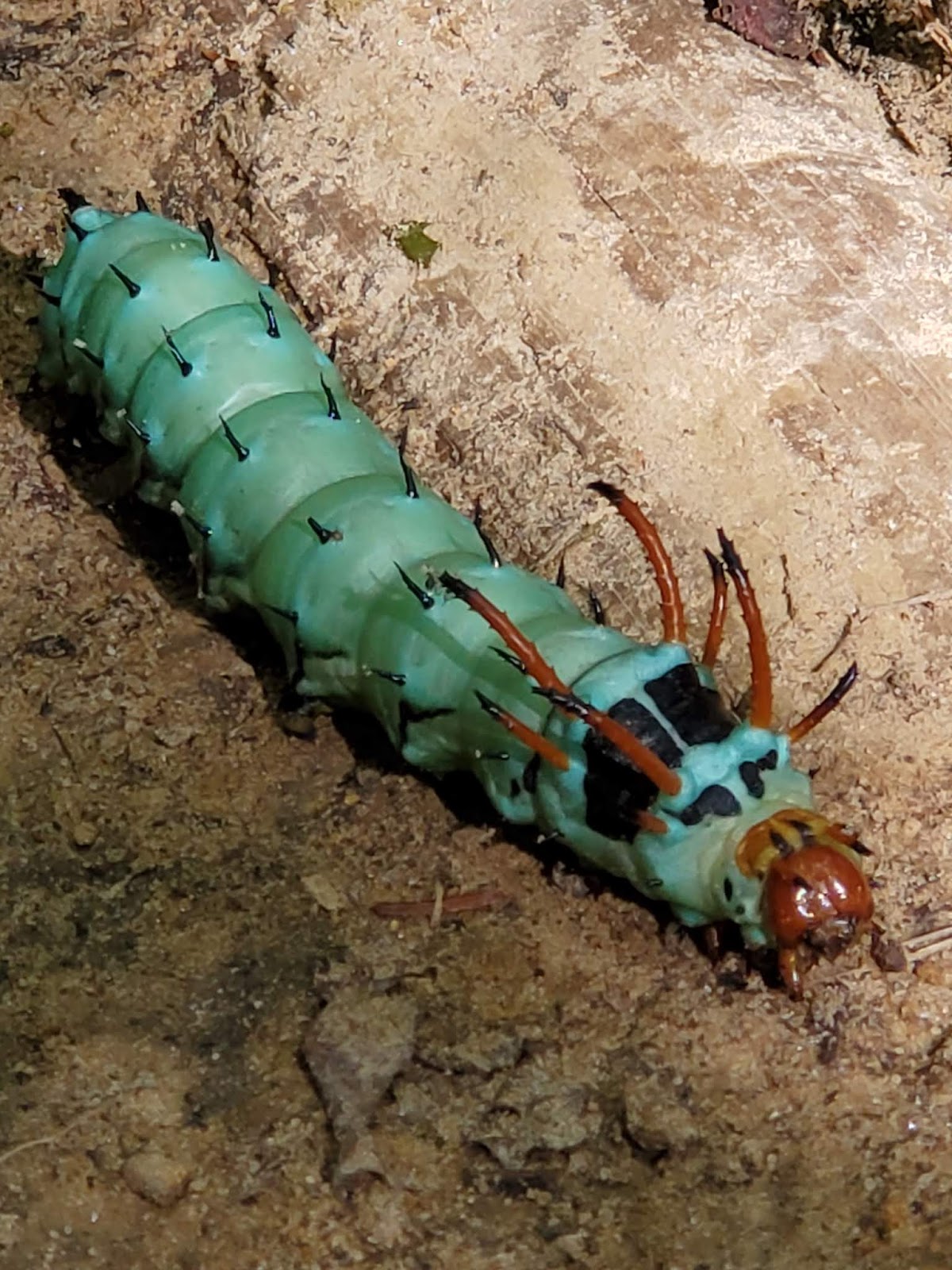
Check out his size in relation to my hand! I guess I’m a desert girl at heart, for I can handle a rattlesnake, but a huge horned caterpillar kinda gives me the heebie-jeebies.

Kentucky is southern, REAL southern, and almost every sentence includes the use of the word yonder. You can get milk on that aisle yonder. The trash pickup is sometime yonder ten o-clock. We’ve been here long enough that we’re starting to develop a deep southern accent, so it’s time to roll on. We’re headed to the Ozarks of Missouri and Arkansas next, with only two weeks left in the Grand Loop Trip of Summer 2019!


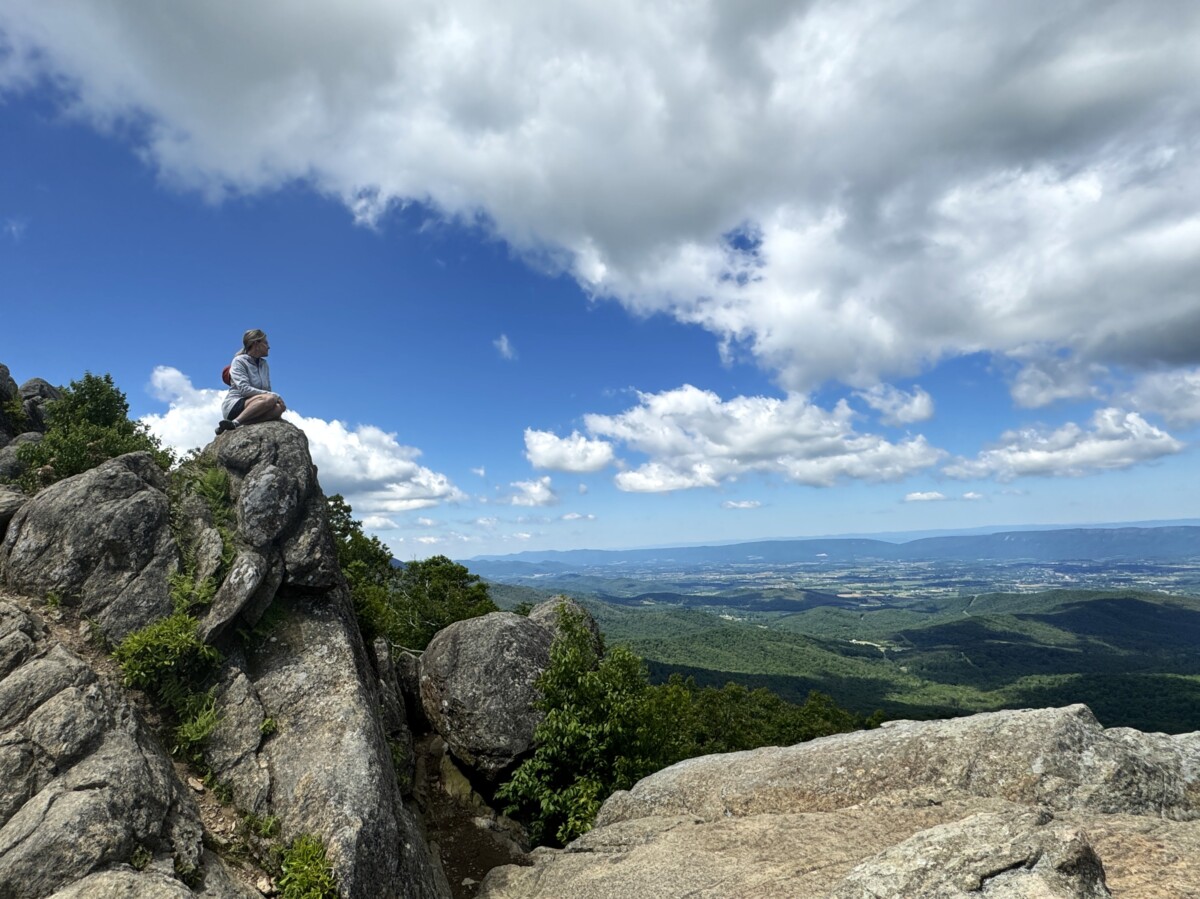
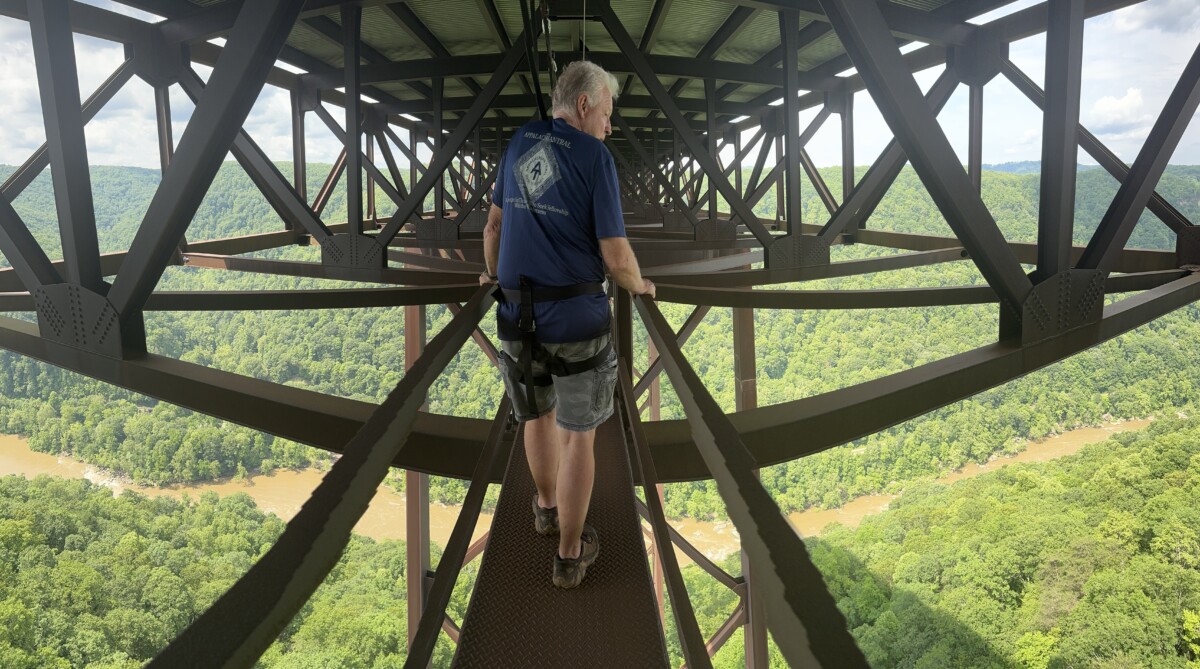
Leave a reply